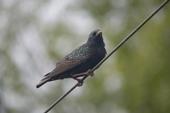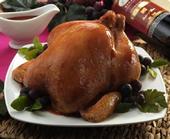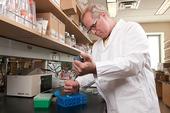- Author: Emily C. Dooley, UC Davis

E. coli and Salmonella are rare in wild birds, Campylobacter more common
Concerns over foodborne risk from birds may not be as severe as once thought by produce farmers, according to research from the University of California, Davis, that found low instances of E. coli and Salmonella prevalence.
While the research found that the risk is often low, it varies depending on species. Birds like starlings that flock in large numbers and forage on the ground near cattle are more likely to spread pathogenic bacteria to crops like lettuce, spinach and broccoli, according to a study of food safety risk and bird pathogens from the University of...
- Author: Marissa (Palin) Stein

On October 7, 2013, the U.S. Department of Agriculture Food Safety and Inspection Service issued a Public Health Alert that linked Foster Farms chicken produced in three California facilities to illnesses caused by salmonella. Since then, according to the CDC website, Costco's El Camino Real store in South San Francisco has recalled over 23,000 units of rotisserie chicken products, and 25 ill individuals have been identified after eating products purchased at the Costco...
- Author: Trina Wood

For home gardeners, spring is a busy time of year and there’s never a tomato with more flavor than one grown to full ripeness on the vine. But there are also many safety precautions to follow to prevent contamination of fruits and vegetables with pathogens that cause serious food-borne illnesses.
Michele Jay-Russell, a veterinarian and research microbiologist at the Western Institute for Food Safety and Security (WIFSS) and program manager of the Western Center for Food Safety (WCFS), recently co-authored a study that highlights the need to be aware of...
- Contributor: Ann King Filmer
- Author: Pat Bailey

An ambitious effort to sequence the genomes of 100,000 infectious microorganisms and speed diagnosis of foodborne illnesses has been launched by the University of California, Davis, Agilent Technologies, and the U.S. Food and Drug Administration.
Bart Weimer, professor in the UC Davis School of Veterinary Medicine, serves as director of the 100K Genome Project and co-director of the recently established BGI@UC Davis facility, where the sequencing will be done. Other collaborators include the U.S. Centers for Disease Control and Prevention and the U.S....
- Author: Jeannette E. Warnert

When Bill Clinton was president in the 1990s, his Council on Food Safety identified eggs as a food that poses a risk to children, the elderly and people with compromised immune systems. The Clinton administration launched a safety plan that aimed to eliminate Salmonella contamination in eggs entirely by 2010.
Unfortunately, the goal was not met. This month, a vast outbreak of Salmonella food poisoning prompted the recall of half a billion eggs produced in Iowa. In California, UC Cooperative Extension worked with other agencies and the egg industry to create the California Egg Quality...



